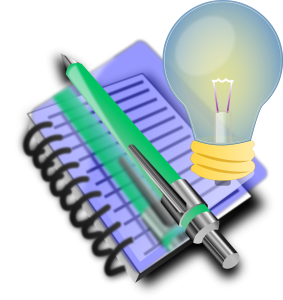In my previous blog on the changing roles of an information developer in an agile environment, I highlighted how a writer puts on multiple hats as the primary technical writer. The “Information Developer” role has graduated from merely writing “to do instructions” to the one who writes user experiences, designs UX templates, and communicates technically. The role has diversified with the advent of API technical writing, web interactive writing and patent writing – all relatively-new areas writers have started venturing into.
Earlier, traditional information developers were involved in creating user guides, online help, context-sensitive help, and installation/configuration guides. Slowly the trend moved ahead by adding a command-line interface (CLI) guide, an application programming interface (API) guide, open-source Markdown documentation, and so on. Along with these additions, information developers have started contributing to writing patent applications – also known as “Innovation Papers”.
Mark Twain rightfully quoted, “So throw off the bowlines, sail away from the safe harbor, catch the trade winds in your sails. Explore. Dream. Discover”. Similarly, information developers are now trying their hands on patent writing.
One would wonder if innovation papers were hard to write; indeed, they are.
Though patent writing has not been a traditional role of a technical writer, we can see that they can contribute to, and support innovators get through the initial journey by preparing innovation paper drafts. Most of the ideas fail to experience the patenting journey as either innovators don’t have the bandwidth to draft their ideas or are hesitant to write.
Due to the complexity of patent practice, often innovators seek professional assistance to document patent claims.
An innovation paper is a technology-oriented draft that follows legal writing guidelines. For an idea to be patentable, an invention must be novel, nonobvious, adequately described, and claimed by the patent applicant clearly and concisely.
As technical writers often play the role of technical communicators, write personas by interviewing the users, understand the importance of style guides and writing styles, are good narrators, and have the experience to draft the storyline, this is a new area where technical writers with expertise on the legal aspect of patents.
Very aptly as said by Graham Bell, “Before anything else, preparation is the key to success.”, Information Developers can contribute here by drafting the patent application on behalf of the inventor.
Some basic rules that can be taken care of while preparing innovation drafts are writing detailed descriptions, writing detailed flow of the invention and the steps, detailing the diagrams, and describing each step clearly and concisely, else it may result in rejection of the patent right in the examination phase.
Technical writers from a similar domain can often help the innovators in thinking hard about covering all the novel aspects in the paper as a lot of questions would be coming in by the information developers during the interviews as they would probably be the first end users of the information being shared. This often does help the innovator in gauging their preparedness for taking the drafts into the patent filing. As information developers often wear different thinking hats few areas where they can contribute are:
- Conducting brainstorming sessions with the innovators
- Prep basic first drafts
- Coordinate with the patent lawyers as they are great coordinators
- Manage review cycles
- Bringing awareness about patenting within the groups
- Setting up the process and facilitating operations
- Converting ideas into innovative papers
- Consultation on areas that would help with the novelty of ideas & documentation
- Building the storyline to enhance the innovation paper to be clear and concise
- Patent harvesting process and best practices
Quick guidelines for novice writers:
- Know why you are preparing the draft
- Work closely with the patent attorney
- Know the deadlines and timing
- Review the draft before filing
Things to remember:
- Visualizing your invention
- Patent drafting
- Filing the patent application
- Publication of the application
- Review requests
- Respond to queries
- Grant of the patent
If you are filing a patent application without help from a patent professional, it is advisable that you should at least get your patent application reviewed by an experienced patent attorney before filing into the patent process. Adding some light for novice writers on what cannot be patented in literature, drama, music, a way of doing business, thoughts, a method of diagnosis, a discovery, the way information is presented, mobile apps, and so on.





